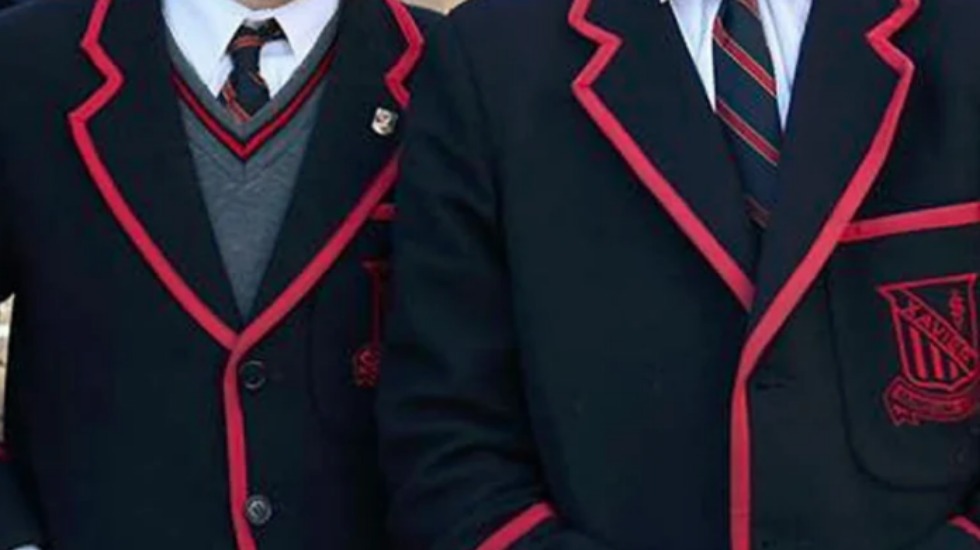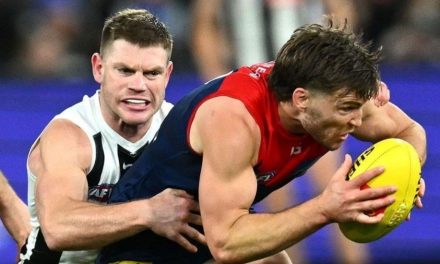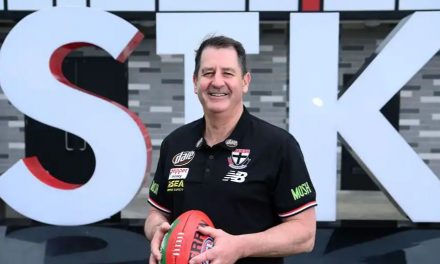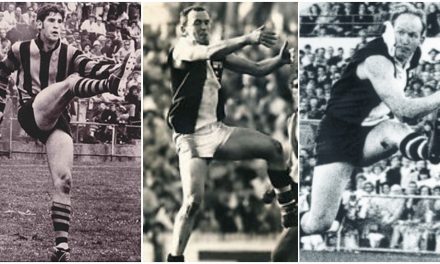Xavier College is one of many private schools given credit for producing AFL players, but what about local volunteers?
In the spirit of modern media, let’s deal with the likely backlash before getting to the subject.
I have absolutely no problem with young footballers accepting scholarships to private schools, nor with the families of others being enticed by the preordained success of scholarship holders to pay sometimes astronomical full fees.
Why wouldn’t you want your talented child to be lavished with the attention of an AFL class coaching panel on one of several perfectly-manicured playing fields surrounded by historic buildings before recovering in an Olympic-sized pool?
Who knows, the lucky scholarship holders, and the less-obviously talented full-fee payers, might even benefit from the academic advantages of smaller class sizes and dedicated tutors and gain a leg up toward an alternate career before their moment of reckoning on AFL Draft day.
So please don’t get your old school tie in a knot and accuse me of having a chip on my government-school educated shoulders when I condemn the current glut of praise for what have become known as Melbourne’s “private school footy factories”.
You will have heard it ad nauseam during Friday Night Footy. It is more difficult to ignore than the giant billboards on Melbourne freeways extoling the sporting and scholastic excellence of expensive schools.
“Great goal from the Xavier College product!”; “Brilliant play by the Caulfield Grammar star!”; “This lad’s another one off the Haileybury College conveyor belt!”
Such references reflect a growing trend. The absorption of talented young players into the private school stream has created a two-tiered recruitment process in Victoria where the Associated Public School competition featuring the city’s wealthiest schools is rivalling the notionally more egalitarian NAB League Under-18 competition for attention.
As Jake Niall revealed in an excellent 2019 investigation in The Age, AFL scouts are now as often attracted to a game between Melbourne Grammar and Scotch College as one between the Northern Knights and the Calder Cannons.
As Niall reported, schools in Melbourne’s Associated Public Schools competition once ridiculed as the realm of “soft private school boys” now educate about 25 per cent of the entire AFL draft. Scholarships, “elite” programs and brand advertising are major drivers of this shift.
Inevitably such focus becomes self-fulfilling with the private school “products” paraded for the AFL scouts’ appraisal more likely to be selected than the obscure suburban late-developer or rarely-sighted country kid.
There are also more problematic issues such as the stereotypical notion kids at expensive schools develop “better character” than those at government schools; not always supported by the headlines these schools create.
PLEASE HELP US CONTINUE TO THRIVE BY BECOMING AN OFFICIAL FOOTYOLOGY PATRON. JUST CLICK THIS LINK.
But increasingly, the message screamed by the commentators and underlined by the omnipresence of the recruiters to parents is that if you want your kid to play in the AFL then get him into a St Kevin’s College or Caulfield Grammar blazer.
So what is the problem? The prodigy benefits from those wonderful facilities, some polish is applied by ex-AFL players and the expensive schools have an excellent promotional tool alongside the academic scholarship holders who give them front page coverage on VCE results day.
Well, for starters, there is the irritating lack of reference to the educations of those talented players who attended government schools, something that might expose the idea that expensive schools do not always provide the exclusive launch pad their advertising – and their fees – promise.
Equally there are those players for whom choice of school didn’t have any more influence on their sporting career than their hairstyle.
A commentator might have screeched: “And there’s Dusty Martin. Best player in the comp. Dropped out of Castlemaine High School after year nine!” If so, I missed it.
From a broader perspective, the narrowing of the pathway system further from NAB League to private schools can also shut the door on later developers in a sport that already anoints potential “elite players” at an unusually young age.
Will talented kids discouraged by “failing” to enter either the U18 or private school stream keep playing for his local or country club or be lost to the sport altogether?
But most grating is the presumption that expensive schools “create” great players, not that in most cases those schools are merely one of the links in the chain between the grassroots and the top level.
Where in the moment of high drama on Friday night is the reference to the role of the community clubs where an unpaid mum or dad supervised the future star’s first Auskick session?
Where is the shoutout to the junior coaches who balanced the difficult task of giving that obviously talented kid enough game time while ensuring their teammates were encouraged to be their best?
Why are the expensive schools and the well remunerated employees who apply the finishing touches lauded for their work while those doing the heavy lifting at the base of the pyramid are given short shrift?
As the role of community clubs is routinely ignored or taken for granted, how long before the pride volunteers experience playing the most important role in the game is replaced by a feeling of neglect?












Great article Richard, I find my interest in AFL has waned over the years as my interest in local footy has increased. The AFL just does not represent the ‘community’ like it might have done 30-40 years ago when clubs, to a large extent, still represented the towns they are named after. Other than a few clubs that train in the locale of their namesake, barely any play in the suburb that they supposedly represent, as opposed to local footy where nearly all teams play in the suburbs that they represent!
Guys – pretty simple solutions here to the problems Richard outlines: 1. get rid of the Draft, which private schools appear to have taken a stranglehold on. Go back to clubs developing local kids to play for their local club, which will also require AFL clubs fielding junior rep teams (all of which occurs in the NRL) and 2. just switch to NRL! the culture of NRL is more more socially diverse, egalitarian and authentically grassroots/working-class than AFL, and the game is a fiercer contest and much more of an absorbing physical & psychological battle of attrition. It’s a no-brainer!
Such a pity only Victoria have these private schools you speak of. I pity the rest of us.
SA has them too. Many players come through private schools but also play with SANFL clubs too. Many of the better players tend to end up playing league football if they’re good enough, which holds them in good stead when they’re drafted and play AFL as they’ve already played against adults.